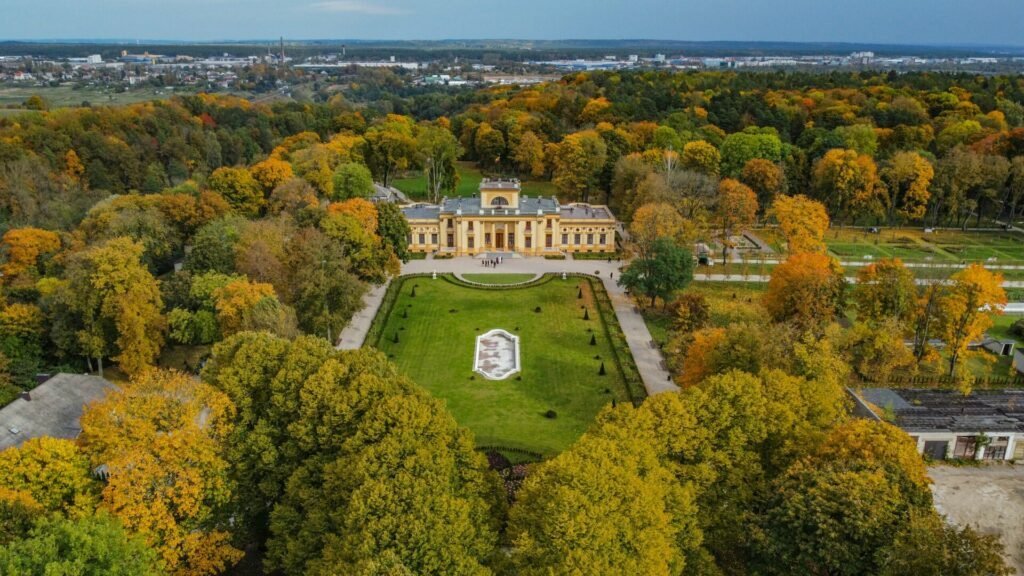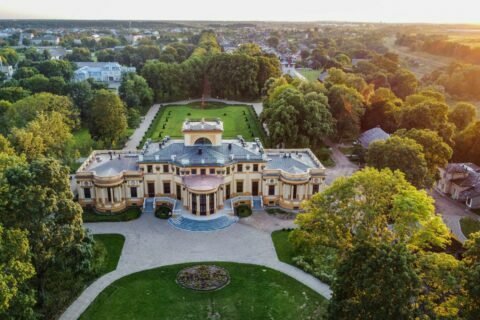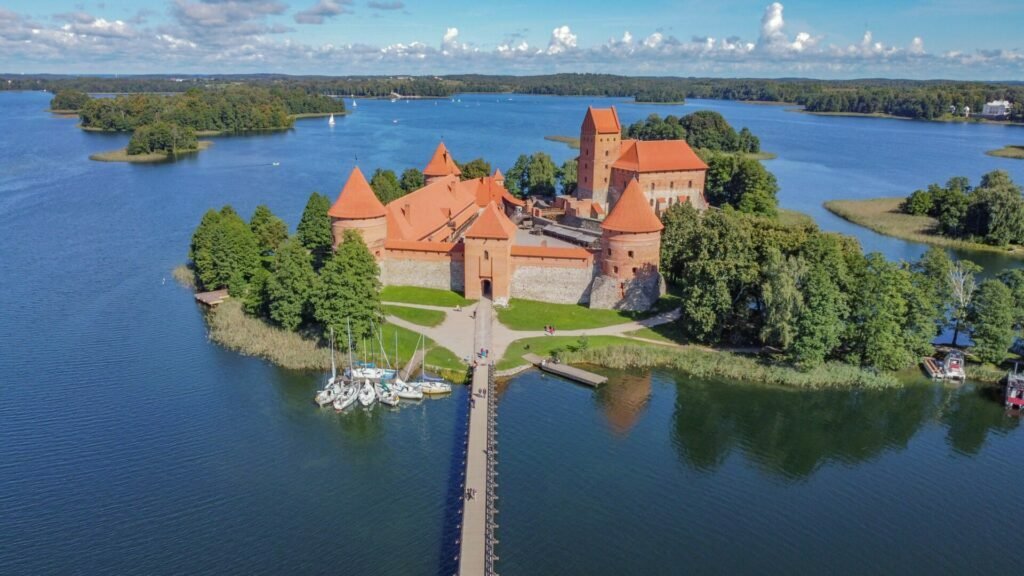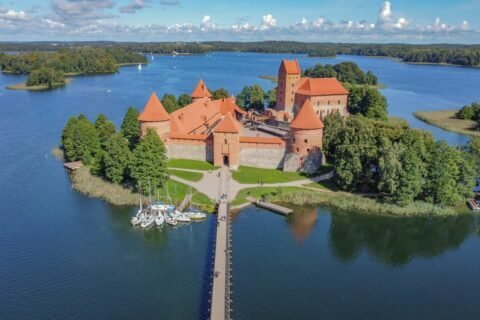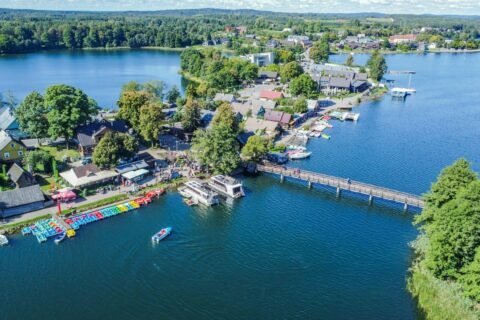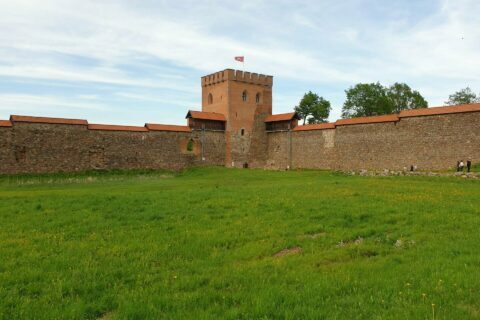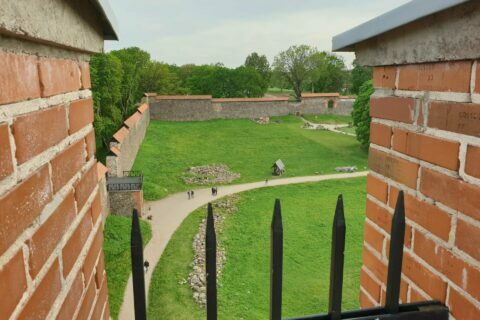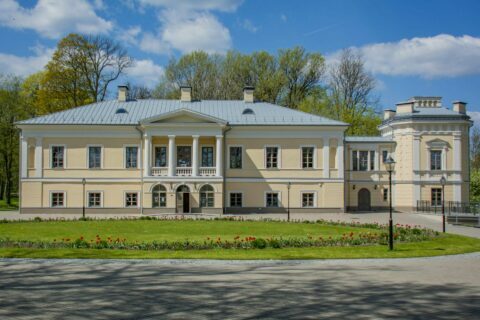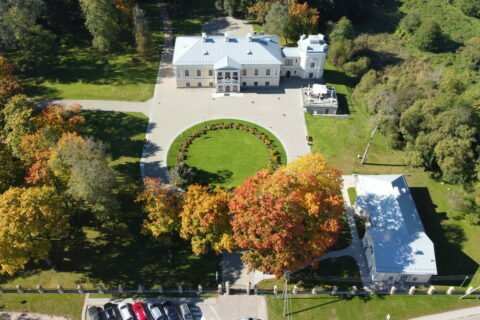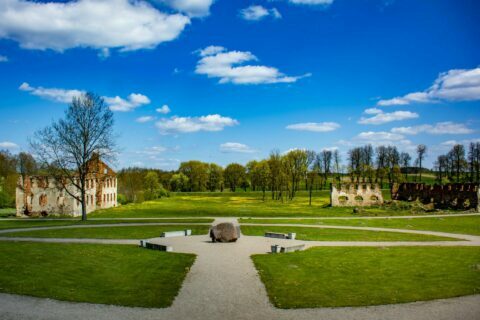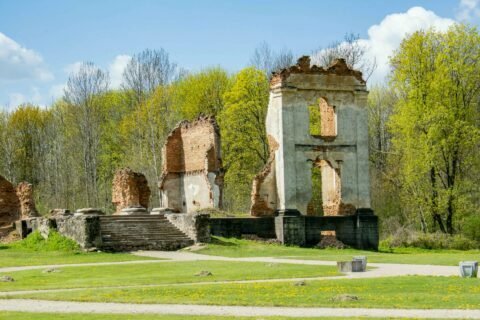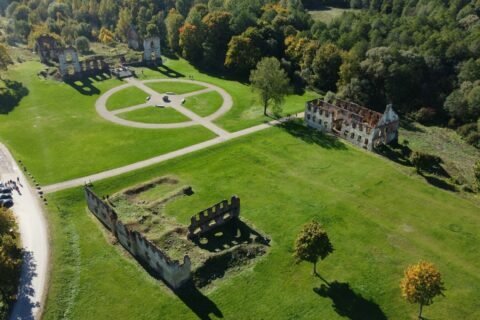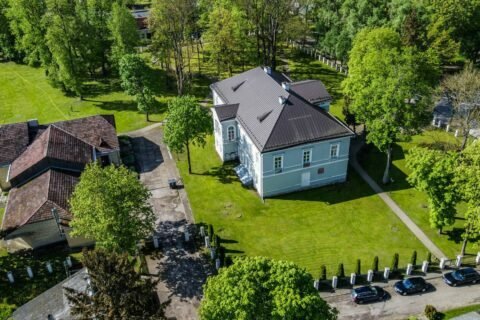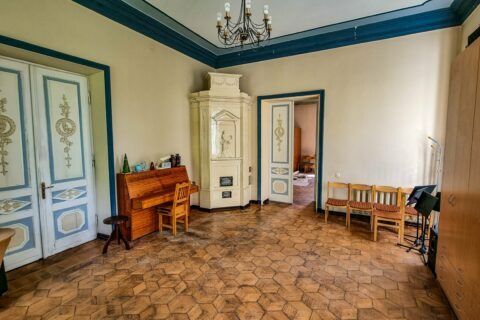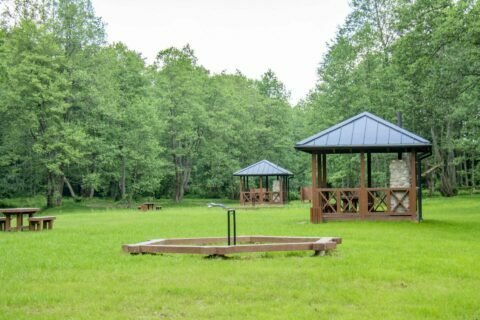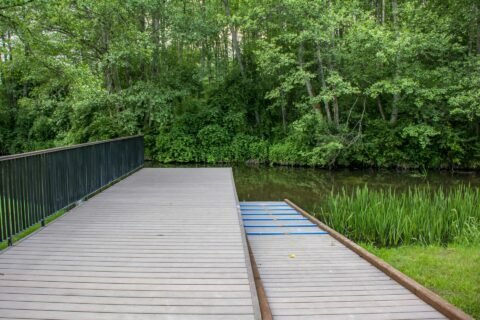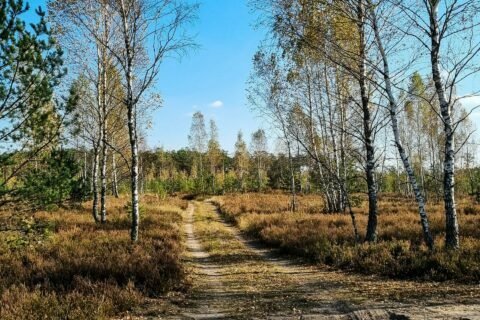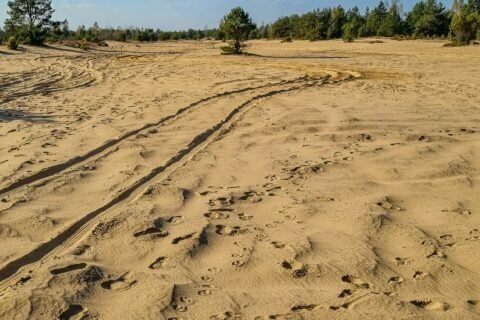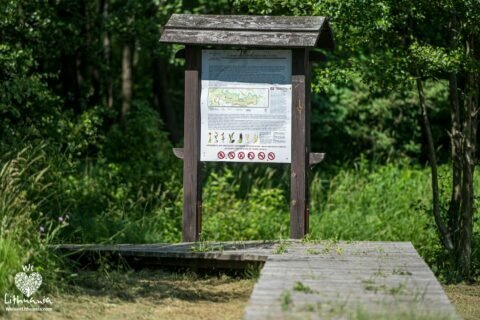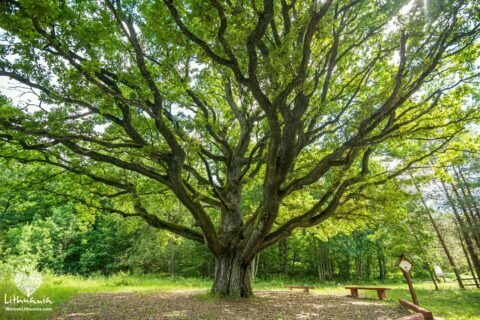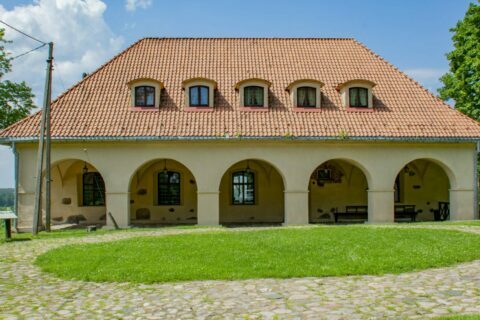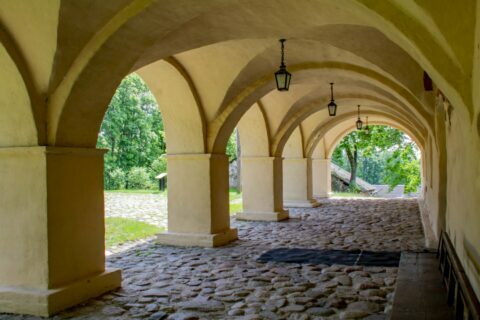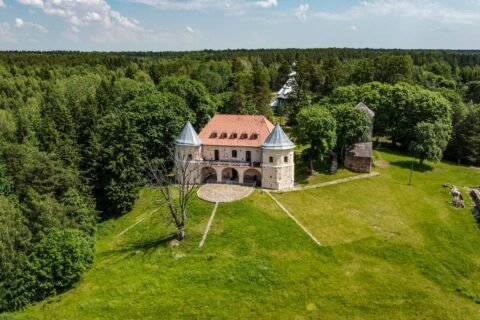South-eastern Lithuania is a distinctive, beautiful land rich in natural, historical and cultural heritage. Restored manor houses, beautified parks, forests stretching over thousands of hectares – all this characterises the region of Southeast Lithuania. We offer a route that will allow you to visit the highlights of this region.
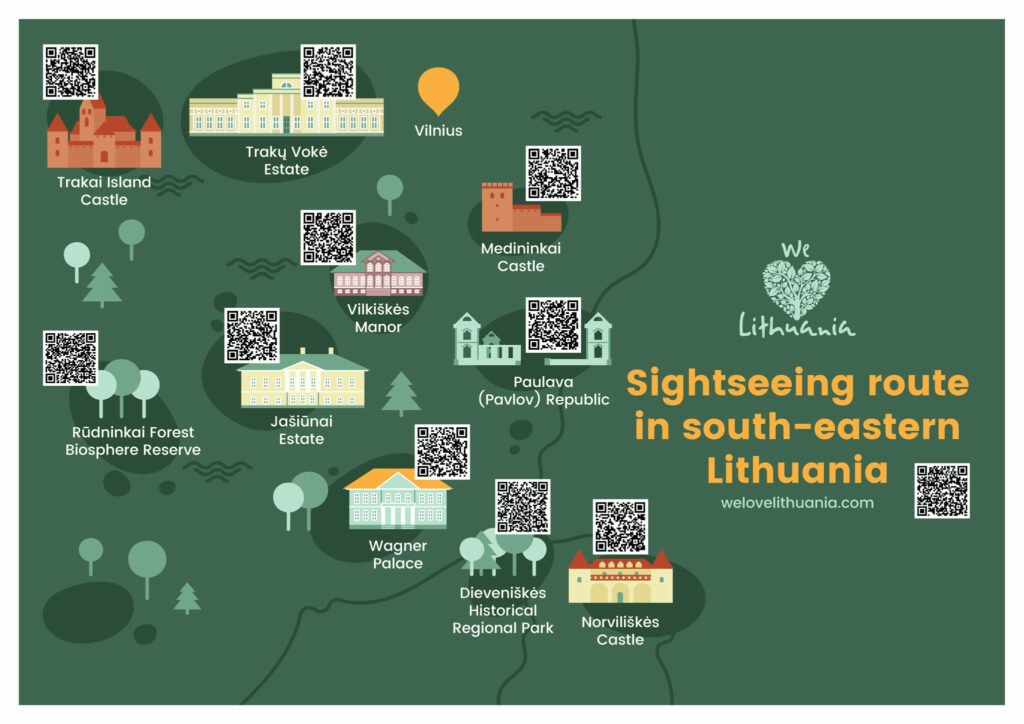
Another centre of attraction has appeared on the map of Lithuanian manors: the Manor of Trakų Vokė. Well, maybe it’s not quite accurate to say “appeared” – it has always been there, but until recent years it was rather neglected and uncared for, so even the people of Vilnius, in whose neighbourhood the manor is located, were unaware of its existence. Today, with restoration work well underway, the Manor of Trakų Vokė welcomes you with a renovated palace, a well-kept garden, walking paths and a sparkling fountain. The inside of the manor is still being worked on, but you can also visit it. Guided tours of the palace are available to show the history of the estate and the life and daily life of its last owners, the Count Tiškevičius and his family. It is worth coming here to learn about the history of the Lithuanian nobility or just to take a stroll around the picturesque surroundings.
Only 28 kilometres west of Vilnius, Trakai is a historic Lithuanian town surrounded by lakes. The fortress built on the island of Galvė Lake in the 14th–15th centuries is probably the most famous castle in Lithuania. Shrouded in legends, celebrated by poets and depicted many times on canvases and in photographs, it is one of the most striking symbols of Lithuania. Today, the Trakai Island Castle houses the Trakai History Museum. Here you can stroll through the ancient castle’s halls and see the exhibitions: collections of pipes, clocks, furniture, porcelain, glass and boneware, coins, medals, ancient maps, hunting trophies, jewellery, household utensils, knights’ armour and weapons, valuable paintings. In total, the Museum’s collections contain almost 400,000 exhibits. The castle also hosts exhibitions, educational events, concerts, festivals and celebrations.

Medininkai Castle in south-eastern Lithuania is an excellent example of a defensive complex, which can be regarded as the most developed and authentic enclosure-type castle and one of the oldest monuments of stone and brick masonry architecture and defensive objects in Lithuania. In bygone times it protected the Lithuanian state from enemy attacks; today it is a museum of history. The main tower of Medininkai Castle, called the Donjon, is 5 storeys (about 25 metres) high and it houses 4 exhibition halls. There are many exhibits of 14th–18th century weaponry: cannons, stone projectiles, archaeological finds; a collection of silverware from the 10th–20th centuries; and a collection of hunting trophies and knives belonging to the President of the Republic of Lithuania, Algirdas Mykolas Brazauskas. Visitors are also introduced to the history of the brick castles of the Grand Duchy of Lithuania. From the fifth floor, you can go to the Donjon’s open-air observation deck and have a look around the surroundings of Medininkai.
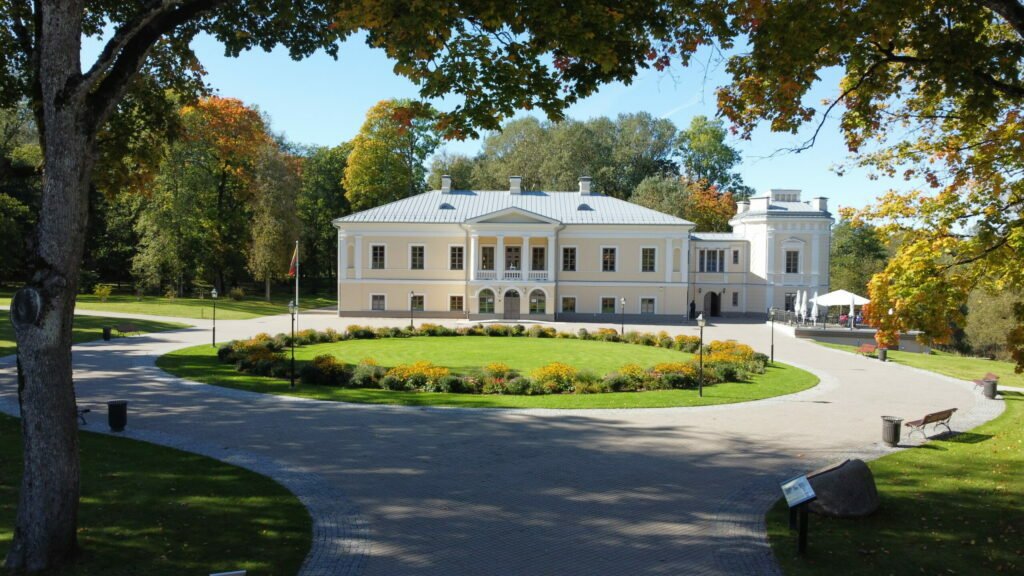
Jašiūnai Manor, which in its heyday was the cradle of culture in the area, is now slowly regaining its status. In this surviving authentic, classical palace of the early 19th century one can view interior design elements characteristic of that era. The building also houses a museum exhibition and an event hall. The park surrounding the palace has been transformed into a recreational space, which is freely accessible to both the inhabitants of the town and the visitors of the manor.
The Republic of Paulava (Pavlov)
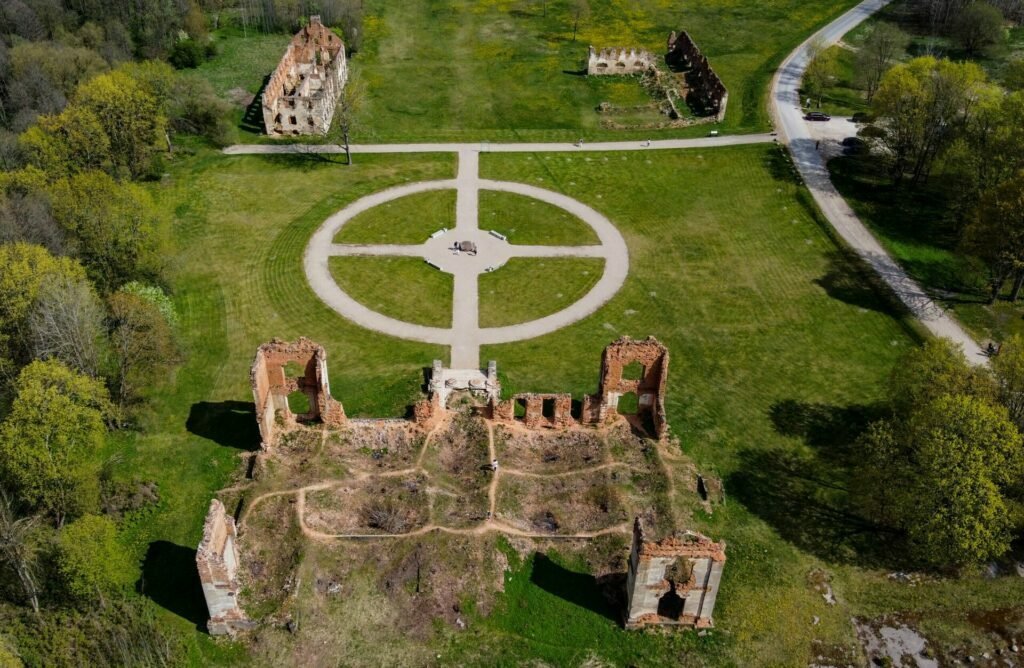
The Republic of Paulava (Pavlov) is one of the most unique phenomena in Lithuanian history. It was an autonomous republic that existed in the 18th century, during the days of serfdom, not far from Vilnius, in Merkinė, in the present-day district of Šalčininkai. It had its own constitution, coat of arms, president, peasants’ parliament, money, treasury, mutual assistance fund, militia, and school. Today, we are reminded of it only by the fragments of the manor house, stables and other buildings that have survived. But in the second half of the 18th century, it was the place where the most radical and progressive peasant reform in the Republic of the Two Nations was implemented, which clearly demonstrated the inefficiency of the system of serfdom.
The Republic of Paulava has 3D stands showing how the estate buildings looked in the 19th and early 20th centuries.
Another gem of history and cultural heritage, located in Šalčininkai itself, is the Wagner Palace. The restored impressive 19th-century neoclassical palace retains its original interior decoration – the Golden Hall and the wood-burning stoves. Today, the Wagner Palace is home to the muses: the Stanislaw Moniuszko School of Arts, exhibitions, literary evenings and meetings, and classical music concerts in its magnificent halls. The Wagner Palace is surrounded by a beautifully landscaped environment, where you can freely visit, stroll, relax and admire the palace architecture.

Vilkiškės Manor is a 19th-century manor house located in a picturesque location on the banks of the Merkys River in the Šalčininkai District. A state-protected park with linden-lined roads and walking trails around the manor house. On the banks of the Merkys River, which runs right past the manor, there is a recreation area with gazebos, tables, barbecues, fireplaces, changing rooms and a jetty. This campsite is available to both frequent canoeists on the Merkys and visitors to the estate and the park who want to go for a walk. It is planned that cultural events and educational programmes will be organised in the manor house, which is currently under restoration.
Rūdninkai Forest Biosphere Reserve
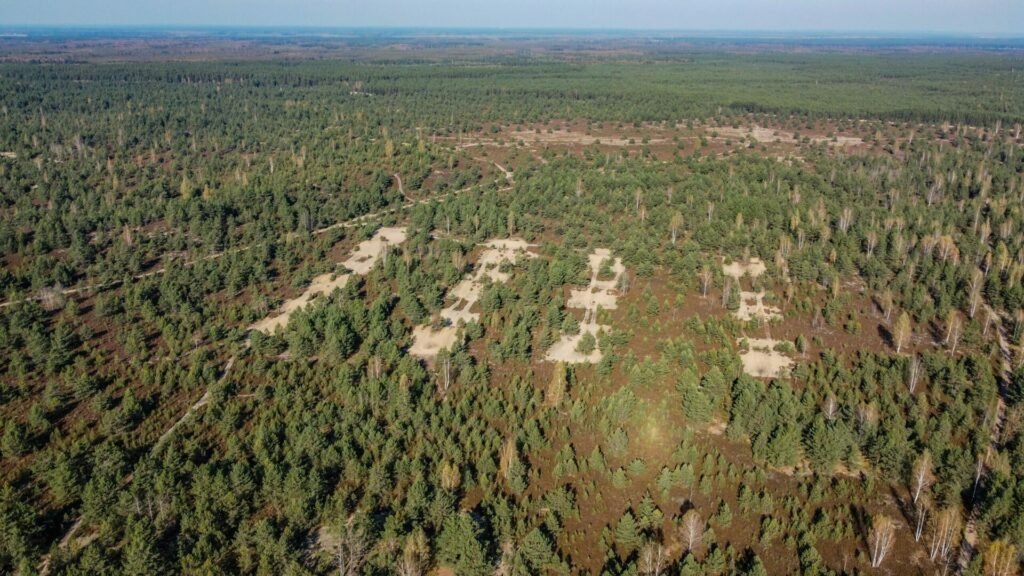
The Rūdninkai Forest Biosphere Reserve is a place where sad history and unique nature intertwine. The highlight of the site is the continental dunes, an open sandy glade formed by fires caused by bombs dropped continuously, as it was a training ground for military pilots during the Soviet era. Alongside the dunes, there are whole areas of woodland covered with heather, lichen and scanty trees, the terrain of which has obviously been shaped by the bombs. A hike through the unique biosphere polygon of the Rūdninkai Forest is an unforgettable experience that leaves a strong impression.
Dieveniškės Historical Regional Park

Do you remember that strange bulge on the map of Lithuania, jutting out into the territory of Belarus? Well, it is that bulge, or “Dieveniškės loop”, where Dieveniškės Historical Regional Park is located – an area rich in natural, historical and cultural heritage attractions. When you arrive here, you will first of all find an excellent and very helpful visitor centre, where you can get directions, advice and answers to all your questions before you start your tour of the park. In the Dieveniškės Historical Regional Park you will be able to visit the 16th–17th century buildings that have retained their structure. The ethnographic linear settlements, Lithuanian tribal burial mounds (Poškonys and Stakai), millennial oak trees of Grybiškės and Stakai, the Rimašiai Stone Mound, and the other huge boulders with names that are an integral part of the mythology of the Šalčininkai region, the Bėčionys Mound, and the Castle of Norviliškės. To get to know the nature of the Regional Park and to visit as many sights as possible, it will be easier to travel along the hiking, cycling and car routes established by the Park Directorate and along the Gauja Educational Trail.

Norviliškės Castle is a complex of 16th century Renaissance defensive architecture which, together with the gate tower and the defensive tower, formed a typical closed defensive castle system with a courtyard in the centre. The castle was built at the end of the 16th century by the Šorcas family, who, in 1617, in order to spread the Catholic faith in the region, handed it over to the Franciscans, the Friars Minor of Vilnius, who founded a monastery in the palace. In 1832, after an Uprising, the monastery was closed by the Imperial Russian authorities and soon afterwards it was converted into barracks. In 1904, after the eviction of the barracks, a girls’ school was established in the castle, which remained there until World War I. After that, the castle complex, which had become virtually ownerless, slowly declined until the beginning of the 21st century, when it was restored and reopened to the public as a hotel and a restaurant, where you can not only taste mediaeval dishes, but also hear about the tradition of eating them, the history of the castle, and many more interesting things from the local ”monk“, if you make an appointment in advance.
This article is a part of a project implemented within the framework of the Innovation of Tourism Services and Products Program, with funding from the Agency for Science, Innovation and Technology, and from funds allocated by the Ministry of Economy and Innovation of the Republic of Lithuania.


